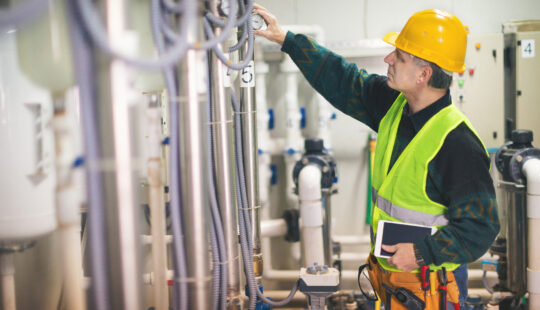What’s News
U.S. president Joe Biden approved a major disaster declaration for hurricane-ravaged Puerto Rico amid renewed warnings from scientists that the warming planet is making storms wetter and more intense. “The worst storms will get worse,” Michael Wehner, a senior scientist at the Lawrence Berkeley National Laboratory, told NBC news.
Hurricane Fiona was one of three powerful storms last weekend, along with Typhoon Nanmando, which hit Japan, and the remnants of Typhoon Merbok, which wreaked havoc in Alaska. Climate change is fueling extreme weather events across the planet, including record-breaking heatwaves, droughts and floods in the U.S. and elsewhere.
SAP’s Take
From California to Florida, people are directly experiencing the impact of global warming and are demanding action. In addition to reducing CO2 emissions and accelerating decarbonization, they are asking what can be done to minimize the impact of water shortages in some areas and flash flooding in others.
Too much water or not enough: climate change, aquifer depletion and population growth are increasing water scarcity worldwide. In the U.S., almost half of the watersheds may soon lack sufficient water supplies to meet monthly demand — one factor that is prompting the Biden administration to declare that global water security is now a matter of national security.
In most countries, including the U.S., water utilities are the stewards of local water resources — whether the sources are reservoirs, rivers or springs and underground aquifers. About 39 billion gallons of water a day are withdrawn from surface water or groundwater sources for public supply, representing about 12% of total freshwater withdrawals.
In the U.S., this drinking water is delivered through 2.2 million miles of underground pipes owned and operated by community water utilities, big and small. Unfortunately, much of the system is aging and underfunded.
“We believe that the water utilities can have a major impact on what is happening right now,” says Daniela Sellmann, global vice president and head of industry business unit utilities at SAP and an expert on water management.
Although Sellmann acknowledges that the water utilities will never achieve everything alone and need the support of the government, she believes there are actions they can take to manage water supplies, reduce losses through leakage, and cut energy consumption. “One of the main pieces that we see for the water utilities is basically to improve water catchment and then educate society about how to use that water. This is really low level, but it’s something that they can do,” she says.
According to the Unite States Geological Survey (USGS), the lower 48 states receive enough precipitation during an average year to cover the states to a depth of about 30 inches. Unfortunately, only a small proportion of that rainfall — and an even smaller portion of the cloud bursts that lead to flash flooding — finds its way into public water supplies.
Even when rainfall is successfully captured and processed, Sellmann notes that water utilities often suffer huge water losses because of leaks in their aged water distribution networks. In the U.S., the most conservative estimates put the percentage of treated water lost because of leakages at around 17%.
The American Society of Civil Engineers estimates that 6 billion gallons of treated water is lost each day in the U.S., enough to fill over 9,000 swimming pools. The Environmental Protection Agency estimates that distribution system leaks represent a cost $2.6 billion a year. Much of this wasted, treated water is lost through the 240,000 water main breaks that take place annually across the country.
Finding those leaks is one area where technology – including connected pressure and flow sensors, smart meters and software such as real-time analytics and predictive maintenance apps – can reduce leakage.
Tracing and repairing these leaks is likely the most cost-effective way to improve water security and combat the effects of increasingly frequent prolonged droughts like those in the American West this year. Although leak repair and pressure management are two well-known ways to reduce distributional losses, and have proved highly effective in some geographies outside the U.S., their potential as part of a water-saving strategy has been largely underutilized.
Experts suggest this may be because water losses in distribution systems in the U.S. are not systematically tracked or regulated. Only seven states currently require standardized water loss audits, and no state regulates the level of water losses. However, the regulatory environment governing water losses is rapidly evolving and several states are now considering tighter regulations.
Reducing the loss of treated water from the distribution system would also help utilities reduce their energy consumption and carbon footprints. “Losing the water from the network leads to less pressure, which means using more energy for the pumps that are pumping the water, and it also it has a really negative effect on the water quality within the pipes,” Sellmann says.
Leaky infrastructure also means utilities have to treat and process more water, which, in the case of some energy-intensive processes like desalination, pushes up costs and energy usage. So, as Sellman points out, helping utilities use smart technologies to become more efficient becomes a virtuous circle where everyone wins.
Contact:
Ilaina Jonas, Senior Director of Global Public Relations, SAP
+1 (646) 923-2834, ilaina.jonas@sap.com



